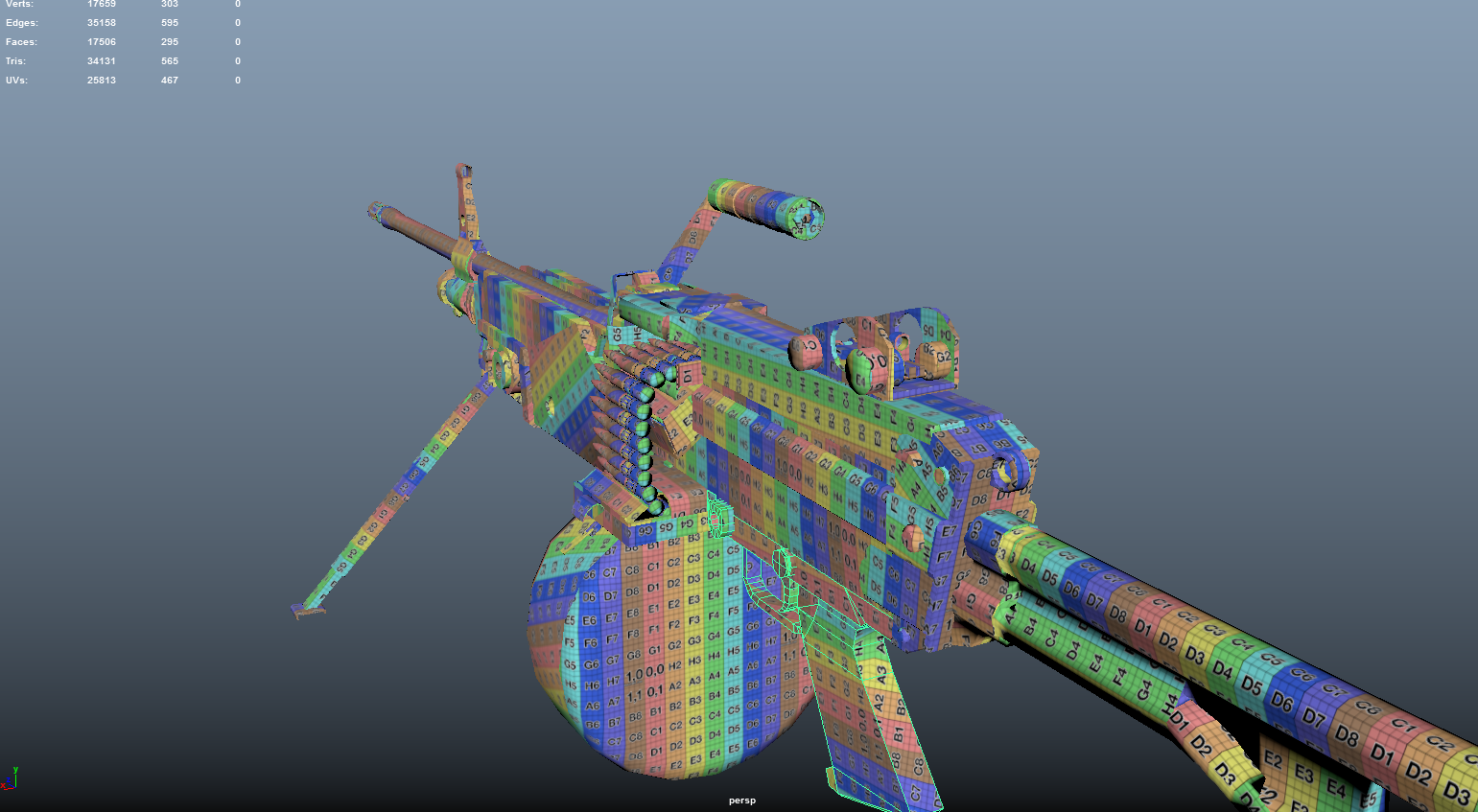The BRAWL² Tournament Challenge has been announced!
It starts May 12, and ends Oct 17. Let's see what you got!
https://polycount.com/discussion/237047/the-brawl²-tournament
It starts May 12, and ends Oct 17. Let's see what you got!
https://polycount.com/discussion/237047/the-brawl²-tournament
First person game weapon -- One 4k texture map? Two 2k maps? Or just one 2k map?
Hello, this thread is for two separate but related questions.
1. Here is a machine gun model that I will use in a first person shooter. This model has quite a bit of geometry on the inside, but this is very small things that will only be seen when reloading, so I don't think it warrants that much pixel space in the UV map. But the outside of the gun, like the prominent sides and top and ammo belt and barrel, etc. -- the stuff you will see on screen most often -- it would make sense to get more pixel space on those parts. So would it be unheard of to split this model into two texture maps, one for the outside pieces and one for the inside pieces? Or perhaps given the relative quality of this piece, there simply is no reason to go so far, right? I'm not expecting AAA quality because the model is pretty simplified with no normal map or anything, but I still don't want muddy looking textures.

2. And my second question is about grouping and how that relates to texture maps. Notice how I have grouped the model. I think this is common practice. Many smaller groups combined into one whole.
So lets say I do decide that I want to get a couple of texture maps for this model, one for the outside and one for the inside. Is this as simple as grouping the model into two separate groups and exporting that way? For instance, their would be a MachinegunBody group with most of the stuff underneath, and then a MachineGunParts group with the other little bits underneath?
Thanks a lot for any clarification.

1. Here is a machine gun model that I will use in a first person shooter. This model has quite a bit of geometry on the inside, but this is very small things that will only be seen when reloading, so I don't think it warrants that much pixel space in the UV map. But the outside of the gun, like the prominent sides and top and ammo belt and barrel, etc. -- the stuff you will see on screen most often -- it would make sense to get more pixel space on those parts. So would it be unheard of to split this model into two texture maps, one for the outside pieces and one for the inside pieces? Or perhaps given the relative quality of this piece, there simply is no reason to go so far, right? I'm not expecting AAA quality because the model is pretty simplified with no normal map or anything, but I still don't want muddy looking textures.

2. And my second question is about grouping and how that relates to texture maps. Notice how I have grouped the model. I think this is common practice. Many smaller groups combined into one whole.
So lets say I do decide that I want to get a couple of texture maps for this model, one for the outside and one for the inside. Is this as simple as grouping the model into two separate groups and exporting that way? For instance, their would be a MachinegunBody group with most of the stuff underneath, and then a MachineGunParts group with the other little bits underneath?
Thanks a lot for any clarification.


Replies
Loading two textures is more expensive than loading one texture (assuming the same memory footprint)
Unless there's a very good reason (ie a render programmer tells you to) for doing otherwise, put everything on one sheet and use one material.
Even if you use two materials (alpha/effects etc) you still save resources by using a single texture set because the textures are already loaded.
As far as export goes, you usually just assign materials to meshes and those assignments carry through to wherever you're exporting